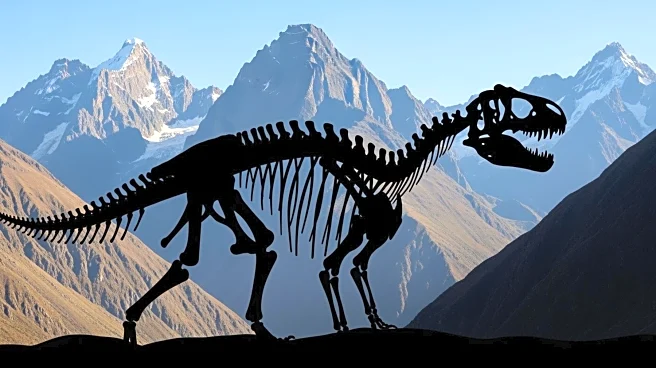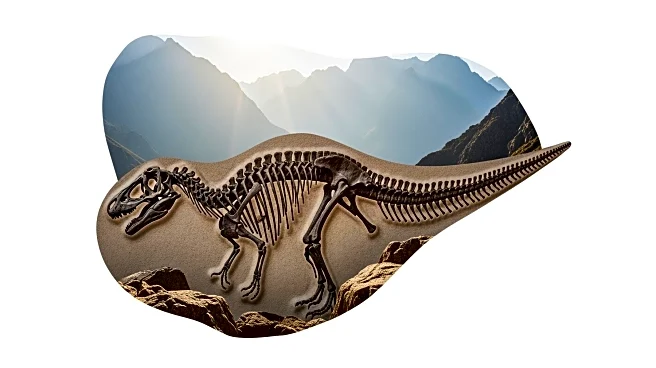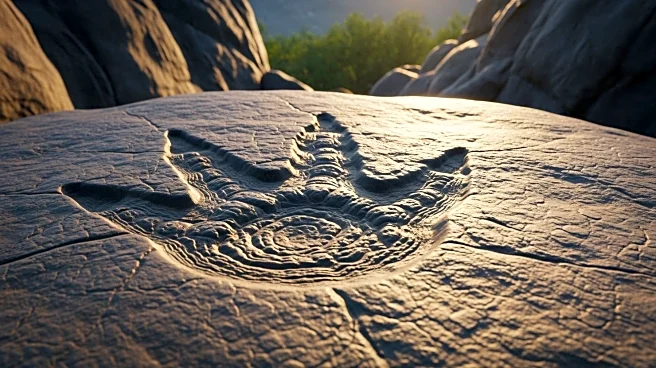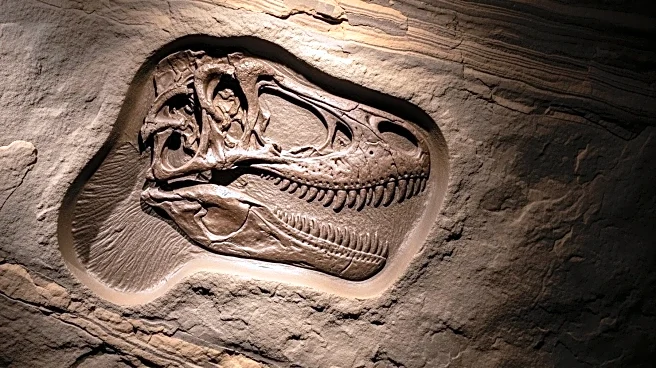What's Happening?
Argentine scientists have uncovered a nearly complete skeleton of a previously unknown dinosaur species, named Huayracursor jaguensis, in the Andes Mountains. This discovery, detailed in a recent Nature paper, dates back approximately 230 million years
to the Late Triassic period. The fossils were found in the Santo Domingo Formation in La Rioja province, northwestern Argentina. The Huayracursor jaguensis is a sauropodomorph, a group of herbivorous dinosaurs known for their large size and long necks. The species is estimated to have been nearly 5 feet long and weighed about 40 pounds, with cervical vertebrae showing signs of elongation, a precursor to the long necks seen in later sauropodomorphs. This finding contributes to the understanding of the diversity and geographic range of early dinosaurs, particularly in South America, where much of the evidence of early dinosaur evolution has been discovered.
Why It's Important?
The discovery of Huayracursor jaguensis is significant as it provides new insights into the evolution of sauropodomorphs, particularly the development of their long necks. This species adds to the understanding of how these dinosaurs adapted to drastic ecosystem changes during the Late Triassic, a period marked by diversification in several animal groups. The find also highlights the importance of the Northern Precordillera Basin as a new site for paleontological research, expanding the known geographic range of early dinosaurs. This could lead to further discoveries that might reshape current theories about dinosaur evolution and their early habitats.
What's Next?
Researchers are likely to continue exploring the Northern Precordillera Basin and other regions in South America to uncover more fossils that could provide additional insights into the early evolution of dinosaurs. Further analysis of the Huayracursor jaguensis fossils may reveal more about the species' biology and its environment. These efforts could potentially lead to new discoveries that enhance the understanding of the evolutionary history of dinosaurs and their adaptation strategies during the Late Triassic period.














